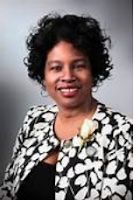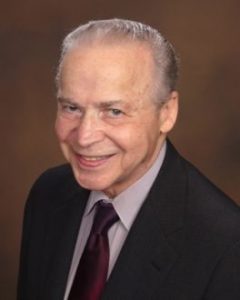Breakthrough for Economic Democracy in the Heart of America
Special Correspondents Rick Osbourne and Dawn Brohawn, July 2022

MO State Sen. Karla May
Missouri’s Republican Governor Mike Parson on Friday, July 1, 2022 signed into law HB 2400 containing an historic breakthrough called the “Citizen’s Land Development Cooperative (CLDC) Act.” This provision will establish a commission to promote the creation of citizen-owned CLDCs, starting in some of the roughest neighborhoods in St. Louis.
Designed to empower economically every citizen (permanent resident) with an equal ownership share in productive land, CLDCs provide a self-sustaining way to finance community development and combat systemic poverty and related problems throughout the state.
House Bill 2400 was championed by State Senator Karla May (D-MO) as an amendment to her previous Senate Bill 772. The concept of the Citizen’s Land Development Cooperative (part of the proposed national legislation called the “Economic Democracy Act”) was first introduced to Senator May by St. Louis businessman Gene Gordon, president of the not-forprofit organization, Descendants of American Slaves for Economic and Social Justice (DAS4ESJ.org).

Gene Gordon
Mr. Gordon had learned of the CLDC and other economic democratization concepts from lawyer-economist Norman G. Kurland, president of the Arlington, VA-based, non-profit Center for Economic and Social Justice (CESJ.org). Together with Senator May they crafted a bipartisan piece of legislation that won support from both sides of the political aisle.
Generates Land Development Incomes for Local Residents
According to Gordon, “What makes the Citizen’s Land Development Cooperative different from typical Community Land Trusts and similar non-profit community development vehicles, is that it is a for-profit, professionally managed enterprise providing each citizen with an equal voting, full dividend-payout, non-transferable share.” Gordon said the CLDC will generate income from land-use leases for local, permanent residents, and give them a formal voice in community planning. As businesses locate, expand, or start up in the community, new ownership and job incomes will systematically lift citizens out of poverty and dependency on government and charity.
Monetizing Future Profits

Norman Kurland
Another unique feature is how the CLDC would gain access to new asset-backed money for land development. Rather than relying on taxpayer funding, tax credits, or private equity investors for the billions of dollars needed for developing land and infrastructure currently owned by government, the CLDC would activate an existing power of the regional Federal Reserve Banks. Through local commercial banks, the CLDC will be able to obtain 0% interest (one-time, service fee-only) development loans, collateralized with capital credit insurance, and repaid with future profits generated from land leases.
A Template for All 50 States

IL State Rep. Wyvetter Younge
Kurland added, “We plan to replicate this strategy in all 50 states, which are served by the 12 regional Federal Reserve Banks. This approach to land development could work in urban, rural and Native American communities.”
The CLDC concept, authored by Kurland, was based on the ideas of lawyer-economist Louis O. Kelso, inventor of the Employee Stock Ownership Plan (ESOP) now in federal law. A “Citizens Land Cooperative” became part of a blueprint for rebuilding East St. Louis, Illinois, conceived decades earlier by visionary design scientist Buckminster Fuller, worldfamous choreographer Katherine Dunham, and State Rep. Wyvetter Younge (D-IL).
In 2008, working with Kurland, Rep. Younge introduced similar CLDC legislation and got her bill passed unanimously (114-0) by the Illinois House of Representatives. Sadly, both she and her bill died before getting it into the Illinois Senate. From the heart of America, St. Louis now stands ready to pick up the torch.
For more information, contact info@das4cesj.org.
